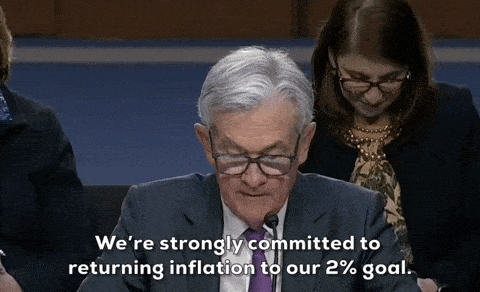Despite the central bank holding interest rates steady at 4.25%-4.50%, and signaling just two potential cuts this year, Bitcoin barely budged, hovering around $104,250 in the hour after the announcement. The underwhelming and unwavering response suggests crypto traders have grown accustomed to the Fed's cautious approach, even as political pressure mounts for more aggressive action.
This non-reaction is very notable given Bitcoin's typical sensitivity to liquidity expectations. Normally, any delay in rate cuts might be expected to weigh on risk assets. But BTC seems to be marching to its own drumbeat lately, trading just 5% below the all-time high it set less than a month ago. Ethereum mirrored Bitcoin's steady stance, while Solana eked out minor gains, a pretty modest show of resilience given altcoins' less than stellar month.
The U.S. Fed's decision comes amid surprisingly tame inflation data that might normally prompt a more dovish stance. Last week's CPI showed just a 0.1% monthly increase (2.4% annually), while April's PCE, the Fed's preferred inflation gauge, also rose a modest 0.1%. Yet Chair Jerome Powell remains characteristically wary, citing "highly uncertain" impacts from Trump's escalating trade wars and Middle East tensions. His comments suggest the Fed won't be rushed into cuts, despite the President's recent jab calling Powell "stupid" for not acting on "no inflation" from tariffs.
All this is happening with the backdrop of the Oil markets, underscoring these global uncertainties. Brent crude's 4% surge past $75/barrel this week, fueled by Middle East tensions, creates exactly the kind of inflationary wildcard that keeps central bankers up at night.
As Alice Liu of CoinMarketCap notes:
"If Powell emphasizes inflation risks, Bitcoin could test $91,500 support."
But with the incredibly neutral stance, that downside scenario appears avoided for now.
What's perhaps most telling is how Bitcoin's reaction differs from traditional markets. While stocks often hang on every Fed nuance, crypto seems increasingly focused on its own ecosystem developments, ETF flows, institutional adoption, and the upcoming halving's supply shock.
As deVere Group's Nigel Green pointed out:
"The data points in the right direction—but we're not there yet."
Bitcoin investors, it seems, are playing the long game. A really long game.

Gif by Dashpay on Giphy
The big question now is whether this calm holds. With September potentially marking the next cut opportunity, and summer trading volumes typically lighter, crypto may be in for a period of consolidation. But if today's unfazed reaction proves anything, it's that Bitcoin's maturation continues—no longer just a speculative asset, but one increasingly judged by its own fundamentals rather than Fed whims.
The market's overall ‘meh’ response to this news becomes even more interesting when you consider the bigger picture.
As an investor, keep your eyes peeled on the following:
Institutional Behavior Changes the Game:
With spot Bitcoin ETFs now acting as a shock absorber, we're seeing less panic selling on macro news. Over $1B flowed into these products last week alone, creating underlying demand that counterbalances trader nervousness.
Supply Squeeze Already in Play:
Even with the next halving years away, Bitcoin's liquid supply is tightening now. Exchange reserves recently hit 5-year lows as long-term holders accumulate, with over 70% of circulating supply untouched for 6+ months.
Political Theater vs. Economic Reality:
While Trump's Fed-bashing makes headlines, crypto markets seem to recognize that Powell's team will move when the data says so, not when politicians demand it. This maturity in interpreting central bank signals is new for crypto.

